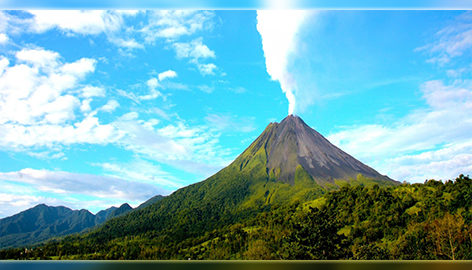

Welcome to yet another chapter of our series “Banknotes of the Countries from across the world”. Though banknotes by their very definition are a type of a negotiable promissory note, made by a bank, payable to the bearer on demand, they are artistic treasures in their own right. All the countries are no doubt proud of their history and heritage and proudly boast about them on their currency notes. Currency notes and their designs and reason behind their issuance are in itself a topic of great interest and study. Hence we will discuss various such interesting and unique banknotes of the world.
In this part we are going to look at the banknotes of Costa Rica. To read the first part of this series click here.
Costa Rica is a rugged, rain forested Central American country with coastlines on the Caribbean and Pacific. Though its capital, San Jose, is home to cultural institutions like the Pre-Columbian Gold Museum, Costa Rica is known for its beaches, volcanoes, and biodiversity! Roughly a quarter of its area is made up of protected jungle, teeming with wildlife including spider monkeys and quetzal birds. Costa Rica was sparsely inhabited by indigenous peoples before coming under Spanish rule in the 16th century.
Did you know that after the Costa Rican Civil War, the country permanently abolished its army in 1949, becoming one of only a few sovereign nations without a standing army! Isn’t that interesting?
It also has progressive environmental policies and is the only country to meet all the five criteria established by UNDP to measure environmental sustainability.
The colon is the currency of Costa Rica. It is named after Christopher Columbus, known as Cristobal Colon in Spanish. The colon was introduced in 1896, replacing the Costa Rican peso at par and is divided into 100 centimos.
Today we are discussing a few Costa Rica Colon banknotes issued in various years. The note specifications are as follows:
1 Colon banknote of 1917:
The obverse has a portrait of an unknown man flanked by the denominational value in ornate patterns. The reverse portrays Goddess Mercury sitting in centre with the denominational value of the note written in numbers set within ornate design patterns.
5 Colones banknote of 1911:
The obverse depicts Costa Rica’s first president Juan Mora Fernandez in centre flanked by the denominational value in ornate patterns. The reverse features the official Coat of arms in centre with the denominational value of the note written in numbers set within ornate design patterns.
10 Colones banknote of 1911:
The obverse has Costa Rica’s Head of State Braulio Carrillo Colina in centre flanked by the denominational value in ornate patterns. The reverse features the official Coat of arms set in patterned design.
50 Colones banknote of 1974:
The obverse has the portrait of Manuel María de Peralta y Alfaro, a Costa Rican diplomat and historian, to right and a class of men to left. The reverse features the Casa Amarilla – Yellow House – the seat of Ministry of Foreign Affairs and Culture, San Jose.
2000 Colones banknote of 2009:
The obverse depicts a Portrait of Mauro Fernández Acuna; Colegio Superior de Senoritas, San Jose; open books; and Map of Costa Rica. The reverse features the Sea Plume; Bull shark; Starfish or Red Cushion Sea Star; fish; coral reef; and turtles.
1000 Colones Banknote of 2011:
The obverse has Costa Rica’s Head of State Braulio Carrillo Colina, while the reverse highlights the Dry Forest Species with the Guanacaste Tree, the national tree of Costa Rica known for its chilling shade – a blessing from the heat, the Pitahaya fruit also called as dragon fruit, and the White Tail Deer.
Aren’t these notes a sight to look at! Collecting banknotes of the world have been a hobby probably since the inception of paper money. Hobbies help to gain knowledge. Notaphily is such a hobby that will give you knowledge of numerous countries and their currencies.
Indeed instead of just spending the money, just for once let’s appreciate the beauty of their designs. There are so many more such banknotes of the world and we are very excited to explore such wonderful artworks. Stay with us and let’s enjoy this together.
The Mintage World Team comprises of experts, researchers and writers from the field of Philately, Notaphily and Numismatics who try to shed light on some of the most interesting aspects of coins, banknotes and stamps from not just India but across the globe as well.